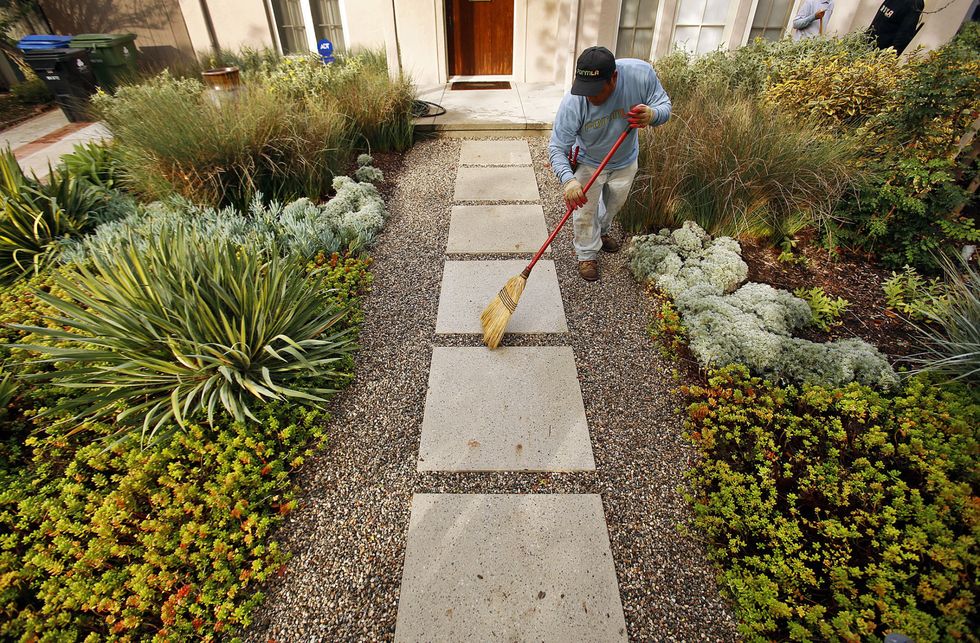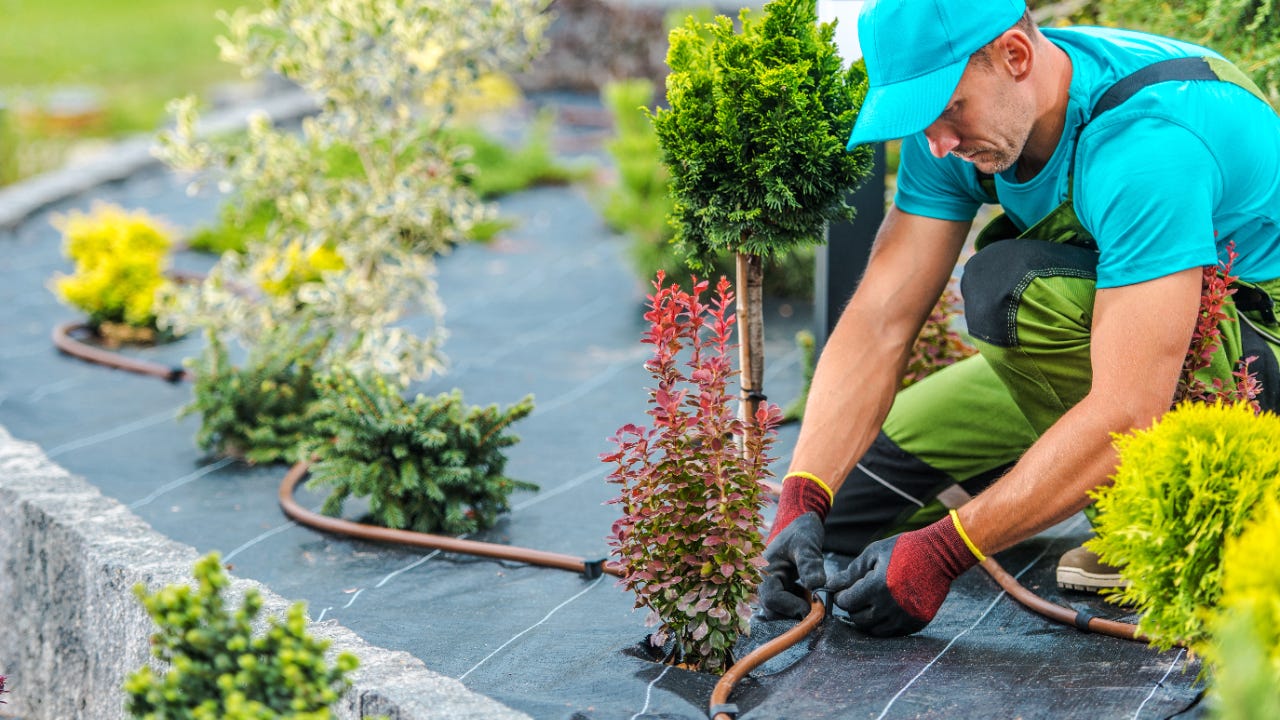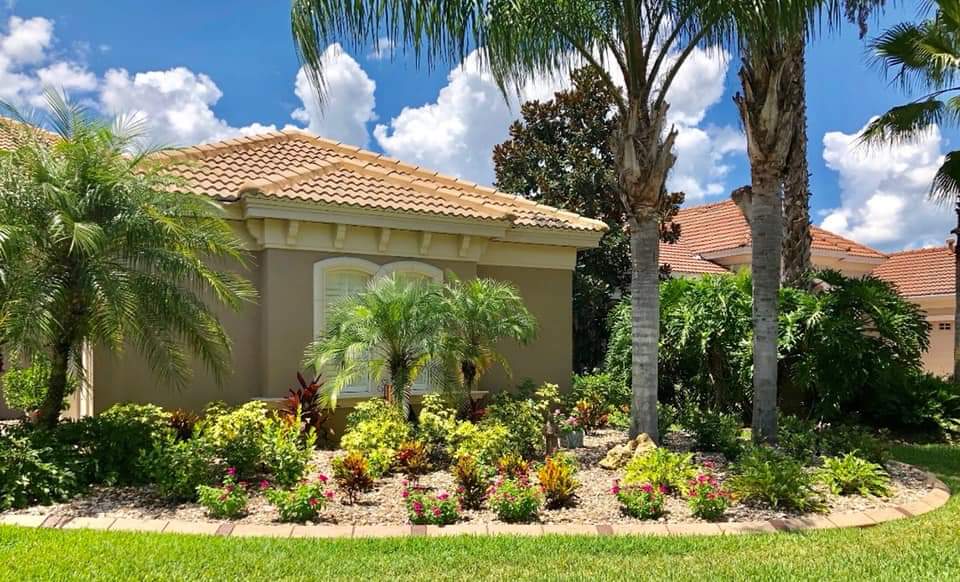Upgrade Your Property with Customized Palm Desert Landscaping Solutions
Upgrade Your Property with Customized Palm Desert Landscaping Solutions
Blog Article
A Comprehensive Overview to Designing and Implementing Effective Landscape Design Solutions
The art and scientific research of landscape design extend past mere looks; they involve a thoughtful combination of layout principles, environmental stewardship, and practical application. An extensive guide to effective landscaping services begins with a thorough understanding of your outdoor space, stressing the relevance of unity, proportion, and balance. As we explore sustainable techniques and the selection of appropriate flora, the implications for biodiversity and area well-being end up being increasingly evident. What approaches can one use to make certain these landscapes not only thrive but likewise flourish attuned to their environments?

Comprehending Landscape Style Concepts
One might question what fundamental aspects add to reliable landscape style. At its core, effective landscape design depends upon numerous vital concepts that guide the setup and choice of components within a space. These concepts include unity, percentage, balance, and rhythm, each offering to produce a harmonious outdoor atmosphere.
Unity refers to the cohesive connection amongst different components, ensuring that they interact visually and functionally. Balance can be achieved with in proportion or asymmetrical plans, allowing the landscape to really feel secure and welcoming. Percentage entails comprehending the range of aspects in connection with each various other and the surrounding atmosphere, promoting aesthetic consistency and convenience.

Examining Your Outdoor Space
Prior to applying the concepts of landscape design, a complete analysis of your outside area is important. This first analysis helps define the extent of your landscape design task and guarantees that your layout aligns with the one-of-a-kind attributes of your building. Begin by evaluating the dimensions of your room, taking accurate dimensions to understand the available location for different aspects such as patio areas, yards, and paths.
Next, observe the existing attributes of your landscape, consisting of topography, soil top quality, and drain patterns. These variables significantly influence plant selection and placement. In addition, assess the sunshine exposure across different areas throughout the day, as this will certainly influence the sorts of plants that thrive in your yard.
Consider the microclimates developed by frameworks, trees, and other obstacles, as they can influence temperature and dampness levels. Take note of any type of existing plants or hardscape elements that you desire to preserve or eliminate. This extensive evaluation lays the groundwork for a efficient and well-informed landscaping option, guaranteeing that your layout is not just cosmetically pleasing but also practical and lasting for years to find.
Lasting Landscaping Strategies
Incorporating sustainable landscaping strategies is necessary for creating an ecologically accountable exterior room. These techniques not only advertise environmental balance yet likewise enhance the useful and visual value of a landscape. One fundamental technique is the usage of indigenous plants, which call webpage for less water and upkeep while supporting neighborhood wild animals. Applying efficient watering systems, such as drip watering, lessens water waste and makes sure that plants obtain ample moisture.

One more effective method is the strategic positioning of trees and hedges to offer all-natural windbreaks and color, therefore lowering power prices (Palm Desert go Landscaping). Rainfall gardens can be incorporated into the landscape style to take care of stormwater drainage successfully, filtering system pollutants prior to they go into waterways
Selecting the Right Plants
Picking the right plants for your landscape is essential to achieving both visual appeal and environmental harmony. The process begins with an understanding of your regional environment, soil problems, and the certain microenvironments within your landscape. Evaluating aspects such as sunlight direct exposure, moisture levels, and existing vegetations will assist you choose plants that thrive in your one-of-a-kind setup.
Take into consideration including native plants, as they are well-adapted to neighborhood conditions, need less upkeep, and support neighborhood wildlife. Furthermore, selecting a diverse selection of varieties can improve biodiversity while minimizing the threat of illness and insect break outs. It additional resources is necessary to examine the growth routines, blooming durations, and seasonal colors of possible plants to create a cohesive and vibrant landscape.
Furthermore, think about the intended usage of the space; for example, if the area will certainly experience high foot traffic, choose resilient ground covers. By attentively picking plants that align with both your environmental requirements and visual objectives, you can create a lasting landscape that not only improves your building yet likewise contributes favorably to the bordering environment.

Application and Upkeep Techniques
As soon as the best plants have actually been selected for your landscape, the emphasis moves to reliable application and ongoing maintenance strategies. Effective installation starts with correct site preparation, which includes dirt screening to figure out nutrient degrees and pH, adhered to by modifying the dirt as needed. Meticulously set up plants according to their growth habits and light needs, making sure appropriate spacing to advertise healthy and balanced growth.
Watering is a vital aspect of application. Develop a watering timetable that thinks about the specific demands of each plant varieties, changing for seasonal adjustments. Utilizing drip watering systems can improve water performance and minimize overflow.
Upkeep approaches have to be implemented to make certain the durability and vitality of your landscape. Normal jobs consist of weeding, mulching, and pruning to control development and protect against condition. Fertilization ought to be conducted based on soil tests, providing the required nutrients without over-fertilizing.
Keeping track of for insects and illness is necessary; early discovery can avoid considerable damage. Lastly, seasonal modifications to upkeep routines, such as winterizing perennials and preparing for spring growth, will certainly make sure that your landscape continues to be visually appealing and healthy year-round.
Conclusion
Successful execution and continuous maintenance additionally make sure the durability and vigor of landscapes. By incorporating these components, landscapes can be transformed right into attractive, functional environments that promote biodiversity and add favorably to area well-being.
One could wonder what foundational components contribute to effective landscape design. At its core, effective landscape layout hinges on numerous key principles that assist the setup and option of aspects within a room.Selecting the right plants for your landscape is vital to attaining both visual allure and eco-friendly harmony. It is vital to review the growth habits, flowering durations, and seasonal colors of possible plants to develop a dynamic and natural landscape.
Once the right plants have actually been selected for your landscape, the focus moves to efficient implementation and recurring maintenance methods.
Report this page